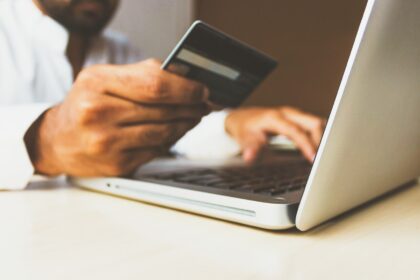This article will show you how to save money in Kenya every month.
You want to save money, but you don’t know-how. You’re tired of living paycheck to paycheck and never having any extra cash in your bank account.
Imagine saving money without sacrificing the things that are important to you. With our tips, we will show you how easy it is to cut back on your spending and start building up a nice little nest egg for yourself.
How to Save Money Wisely in Kenya
Here is how you can save money in Kenya every month.
1. Make a Budget
With a budget, you will see where most of your money is going. It’s a simple spreadsheet that can show you how much you’re spending on housing, transportation, and groceries.
Start by creating a budget using a mobile app or spreadsheet, which tracks all of your income and expenses. You’ll also need to make sure that there’s plenty of room for savings in your budget.
Create a budget, track your expenses and always try to spend less than you make.
2. Make plans to save
It’s a good idea to have a plan for your monthly savings. If you don’t know when or where you will save money, it is easy to fall back into bad habits and spend everything that comes in.
You can plan to save 10 to 15 percent of your income. To begin with, if you can do more, great! If saving 10 percent feels like a lot for you right now, start small and work your way up over time.
3. Record your expenses
This is a simple way to ensure that you won’t spend your money on things you don’t need.
Keep track of every expense, so you’ll never forget to pay a bill or repurchase groceries.
You can do this by using an app on your phone to enter expenses as they happen or by writing down everything in a notebook. If you write down your costs, try to do it at the end of every day or week.
4. Automating your savings
If you have difficulty sticking to a budget, here’s another idea. Automate your savings so that money is taken from your account every month and put into another account. That way, it will be more difficult for you to spend the money on something silly or unnecessary.
You can set up an automatic transfer from your checking account to your savings account.
By automating your savings and sticking to a budget, you can see significant results in just a few months.
5. Open a fixed deposit account
You can earn a greater return on your savings by opening a fixed deposit account.
You can open a fixed deposit account in any bank and start saving money today.
It’s easy to withdraw from a fixed deposit when you need the cash.
6. Create a Goal
Have a goal and work towards it.
Having a savings goal will give you an extra incentive to save money every month.
You can start by setting up a target for how much money you want to have in your savings account over the next 12 months.
Once you know how much money you’d like to have saved, create a plan on how you will achieve that goal.
It will be easier to save money when you know why you’re saving it and what for.
7. Buy things in bulk
You save money on the per-unit cost when you buy things in bulk.
You can buy everything from food to toiletries at a discount by buying them in bulk. When you shop for groceries or household items, look for a store that offers discounts for buying in bulk.
Some stores will offer you a further price reduction if you bring your reusable bag or purchase a reusable bag from them.
8. Control your impulses
Give yourself at least 24 hours to think about a purchase before buying it.
You can save money simply by purchasing things impulsively less often.
If you give yourself time to think about whether or not you need something and if the price is right, chances are, you’ll decide against buying it.
Also, when trying to decide if you should make a purchase, ask yourself these questions:
- Can I afford it?
- Do I need this item?
- Can I find it for less elsewhere?
If the answer to those questions is no, think twice before buying.
9. Buy used
You can save between 20 to 50 percent on most items when you buy used.
If something is still in good shape, but you don’t need it anymore, consider selling it and buying it used next time. If that item isn’t particularly valuable or expensive, you might even be able to find a friend who would be willing to buy it from you for a lower price.
When buying new, consider how old the item will be before its useful life is over and how long it will last. Then compare that with the cost of buying used. If you’re going to have an item for only a year or two anyway, it might not be worth buying new.
10. Buy discounted items
By shopping around and looking for a coupon, you can often find an item at a reduced price. By buying discounted items, you’ll be able to save money every time you shop.
It’s pretty easy to find discounts when shopping online
If you’re going to buy from an individual, meet them in person. Ask if they have anything else you might be interested in purchasing or want to know what their best price is for an item.
Try not to impulse buy when shopping locally.













